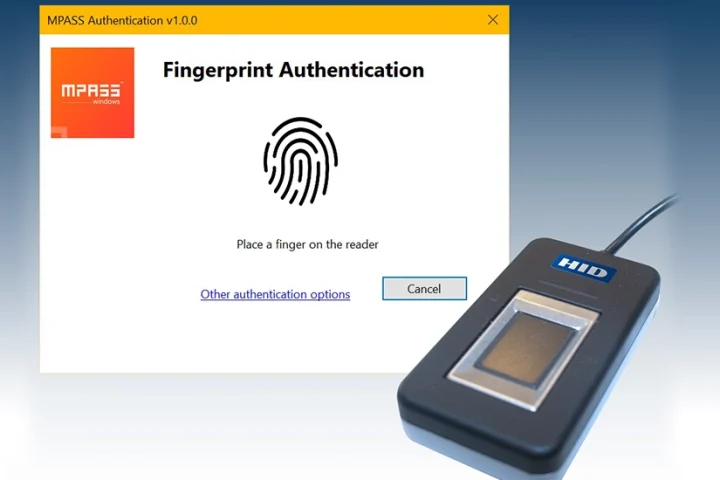Reena Alex John, Vice President- IT Business Solutions, Finesse Global
What leadership skills are critical for women in male-dominated tech environments?
The technology industry, a major driver of global innovation and economic growth, has traditionally been male-dominated, presenting unique challenges for women. However, developing essential leadership skills allows them to overcome these obstacles successfully. While decades of investment in women’s leadership programs have driven steady progress, achieving full gender equality in the technology industry remains a work in progress.
Women should embrace their abilities with confidence, even if they sometimes feel like they are the minority. Voicing your opinions, showcasing the expertise, and taking initiative on lead projects can foster trust and earn the respect within organisations.
Women by nature are resilient, and the ability to bounce back from setbacks without being discouraged by challenges is essential. Strategic networking is crucial for women in tech leadership, helping to combat bias and under-representation. Through networking, women can enhance their personal brand, build supportive communities, navigate workplace dynamics, learn from peers, and manage risks effectively.
In an industry where change is constant, adaptability is a crucial leadership trait. The tech industry requiring women leaders to adapt to new technologies, processes, and organizational shifts. Women should proactively showcase their contributions visible, self-advocate when necessary, and document successes to ensure their work is not overlooked especially when juggling multiple roles.
Women must feel empowered to seek promotions, salary increases, or for securing lead roles in projects. Those who embrace change with agility and confidence not only stay ahead of industry advancements but also foster innovation and resilience within their teams. Women leaders can magnify their impact by advocating for and mentoring other women, creating a more inclusive environment and strengthening solidarity among women in tech.
How do you advocate for diversity in team composition or project outcomes?
Advocating for diversity in team composition and project outcomes requires a strategic blend of intentional initiatives, strong leadership commitment, and cultivating an inclusive culture. According to a report by The World Bank, women represent less than a third of the global workforce in technology-related fields. In major tech companies like Amazon, Facebook, Apple, Google, and Microsoft, women make up 45%, 37%, 34%, 33%, and 33.1% of their total workforce, respectively. However, the representation of women in leadership positions is lower: 29%, 34%, 31%, 28%, and 26%, respectively.
To promote diversity, we can begin by implementing intentional hiring practices such as structured interviews and diverse hiring panels to minimize bias and values skills and potential over subjective impressions.
Building an inclusive culture is crucial, creating an environment where all voices are heard, respected, and valued. Additionally, adopting equitable leadership policies that support diverse needs—such as flexible work arrangements, parental leave, helps to create a workplace that is accessible, and supportive, for all employees.
How do you handle being the only woman in a meeting/ team ?
Being the only woman in a meeting or team can present unique challenges and can sometimes feel isolating, but it’s important to approach the situation with confidence and purpose.
Walk in with confidence and knowing that you’re there for a reason—your skills, experience, and visions are valuable. Build relationships with helpful colleagues who amplify your ideas and advocate for your contributions. And if you are a leadership role encourage diverse perspectives by recognising and uplifting others who might also feel unheard while make sure their opinion matters.
Your perspective as a woman offers valuable insights, that may be overlooked in a male-dominated setting but use it to challenge conventional thinking, ask thoughtful questions, and bring new ideas to the table and leverage your uniqueness to establish credibility.
By approaching these situations with self-assurance, building strong relationships, and contributing your unique outputs, you can navigate being the only woman in a meeting or team effectively.
At Finesse, being a tech company, we benefit from a gender-balanced and supportive ecosystem, which is a significant advantage. It’s truly inspiring to work in an environment that values diverse perspectives and experiences, and we take pride in having a strong women’s fraternity within the company.
What systemic changes would most benefit women in tech?
Systemic change in tech industry requires fostering equality, inclusivity, and long-term support. Key actions include ensuring equal access to opportunities, transparent salary bands, and fair promotion criteria are clear and equitable. Implement unbiased hiring to eliminate gender bias and establish mentorship and sponsorship programs to propel women into leadership.
Embrace new way of working and Implement policies that enable flexibility with remote work and adaptable working hours to support work-life balance especially in caregiving roles. Conduct regular salary audits to close gender pay gaps and ensure fair compensation for women at all levels.
Champion diversity in leadership, amplify women’s voices and ensure they have a seat at decision-making tables, paving the way for their advancement into senior roles.
Enforce strict anti-harassment policies with clear reporting mechanisms and promote a zero-tolerance culture for gender-based discrimination. Systemic change demands unwavering commitment from leadership and consistent action at all levels.
Re-skilling women in the era of Generative AI shifts them from defense to leadership. As AI reshapes the future of work, industries are increasingly depending on AI-driven technologies, creating new opportunities for women to step into leadership roles and drive innovation. While AI is the top topic women want to learn about, 46% of workers needing reskilling in the next three years, according to C-suite executives. Closing this gap is essential and investing in AI training for women is not just an opportunity—it’s a necessity for building a more inclusive and future-ready workforce.
What advice would you give women negotiating work-life balance in high-pressure roles?
Balancing high-pressure roles can be challenging at times, but it is essential to Define your Limits and Set clear boundaries for work hours and personal time—communicate and enforce them to prevent burnout. Learn to say no when needed, prioritizing your workload and personal well-being.
Build a strong ecosystem and don’t be afraid to delegate tasks when needed. Lean on family, or external help to balance household and caregiving responsibilities effectively.
It is very important to set realistic expectations and prioritize what truly matters. Define key goals at work and in life, allocating time wisely. Convince yourself to Let go of perfection and avoid the pressure to be perfect in every aspect. Accept that balancing work and life is a fluid, ongoing process, plan ahead and focus on sustainable practices and be kind to yourself when things aren’t perfectly aligned. Women should practice self-care and engage in activities that promote physical and mental well-being.
Make sure you Communicate openly and negotiate upfront with your employer—discuss work-life balance during job negotiations or performance reviews. Be transparent about your needs, and how flexible arrangements can help you perform at your best in high-pressure roles, and benefitting both you and the organisation.
How can technology itself drive gender equality?
Technology plays a key role in advancing gender equality by creating empowerment opportunities, improving accessibility, and challenging traditional gender norms. Currently, women make up about 35% of the tech workforce, a significant improvement from just 9% in the early 2000s.
Unlike traditional classrooms, technology and online learning platforms have revolutionized education, creating new opportunities for women, especially in under-represented fields like STEM (Science, Technology, Engineering, and Mathematics) .
Technology empowers women through virtual mentorship programs, digital platforms, and social media, increasing visibility by showcasing female role models and success stories. These platforms, break down stereotypes, connect women globally with mentors and peers, and eliminate geographical barriers.
Additionally, remote work technologies offer women better work-life integration by providing flexibility and home-based work options, allowing them to balance professional and personal responsibilities more effectively.
AI tools can identify, detect and mitigate gender bias in hiring, performance evaluations, and promotion practices.
Conclusion
To address inequality, it’s crucial to build a strong pipeline for the next generation of women in tech. The challenge isn’t just getting women into tech roles but creating the right infrastructure to supports their success. Tackling inequality in tech requires a holistic approach. It’s not just about breaking the glass ceiling, but addressing the “broken rung on the ladder,” where women face barriers to advancement, to build a truly equitable future.
By harnessing the power of technology, we can break down barriers, create more inclusive systems, and empower women to redefine leadership roles, driving progress through innovation. With the collective support of society, we can build a future where gender equality in the tech industry is not just possible, but actively fostered by technological advancements, benefiting society as a whole.






















